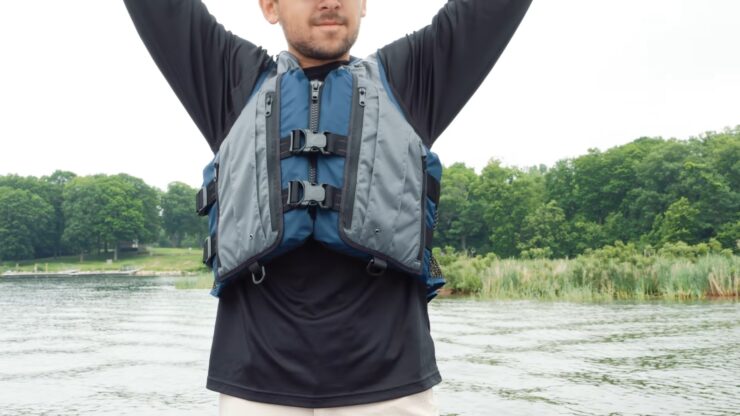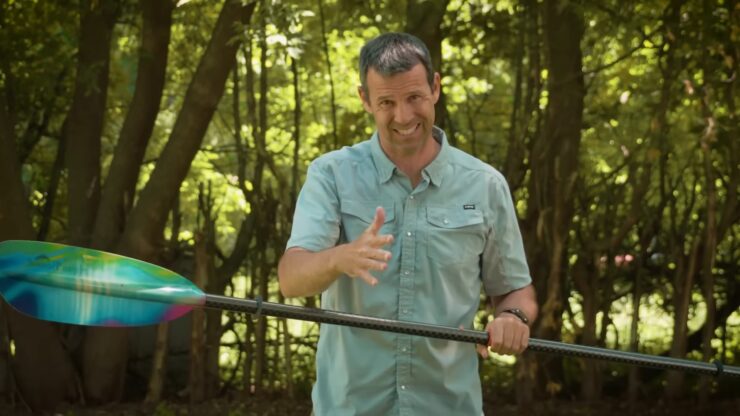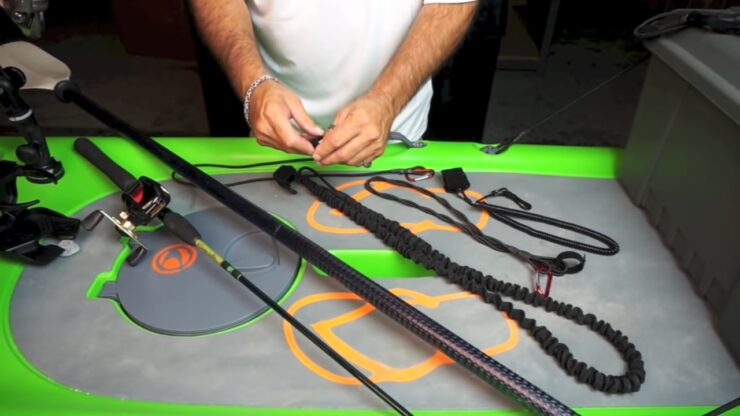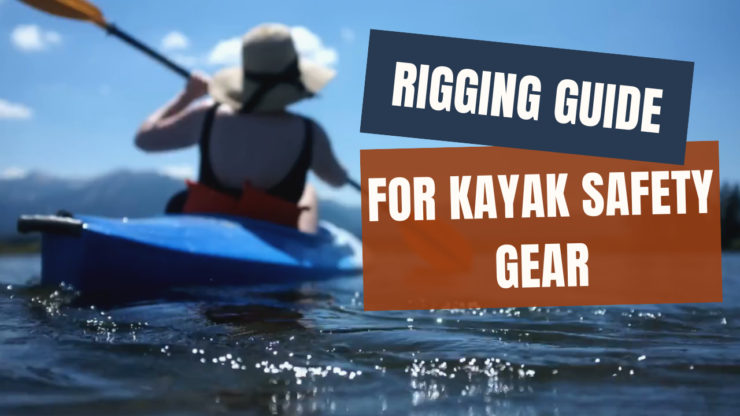Getting ready for a day of kayak fishing out there on the water implies rigging your vessel with safety gear. Any time a human being sets to take on the waters, they need to make sure they are safe from capsizing. One can never be too sure nor prepared as things can go wrong in a split-second.
Fishing has its dangers which are much less likely to happen with contingency plans. And what better way to make sure of that than to bring everything that can protect you with you? By itself, when done the regular and basic way from the coastline, fishing does not seem to have that many dangers. However, paddling away and leaving the shore behind increases the potential for rough situations.
If you are keen on fishing and want to start doing it from a kayak, you must first make sure that your gear and equipment have everything in terms of safety. Safety gear is the number one thing that goes into the kayak, as well as the most important part of your loadout. In the following sections, we talk about what you need to rig your vessel with every time you set out.
Table of Contents
Toggle1. Life Vest

We start off the list with the definitive no-brainer of everything that happens on the water. Be it a river, a stream, a lake, or the ocean, the life vest, also referred to as the life jacket, is your safest bet. This is particularly the case in whitewater when you also need a helmet.
The biggest contributor to fatalities in the water is not wearing life vests. Therefore, the easiest way to combat it is to always have people wear them. Modern vests are much more advanced than the old ones many people think of. There are inflatable models as well as foam ones.
It is easy to fit a life vest onto a kayak, but that should be spare. The main one should be on your body at all times as you are sitting in your kayak and casting into the water. The best thing about modern vests is that do not even look like life vests but rather regular fishing vests and are something you can easily pair with your ensemble.
It is smart to always keep an extra vest to throw into the water if someone else is overboard when their kayak has capsized and they lack the means to remain safe. Therefore, always wear a life vest and keep a spare one close by. You can also tie it with a rope to better control the throw in a rough situation.
2. Extra Paddle

Going out paddling with only a single paddle to your name is a great recipe for potential catastrophe, especially if you are going alone. Sure, paddles are light and they do float on water, or at least they should. However, losing one is easy because dropping it for only a second can separate it from your kayak forever.
Therefore, to prevent being stranded or having to use your arms to paddle and risk going overboard, always carry a spare paddle. An extra means of paddling can be a lifesaver in a tight spot and prevent you from staying out for longer or drifting off further than planned. It can be a smaller paddle than your main one, it does not matter. What matters is always having a spare.
3. Paddle Leash

To always prevent the previously mentioned problem from happening, you should install paddle leashes onto your kayak. Just like their name suggests, they exist to keep your paddle strapped to the vessel, preventing the loss of your only paddling tool.
However, you have to know how and when to use it and when not to trust it. Getting tangled up in it if you are ever capsized can be hazardous. Accidents did happen where paddlers were tangled and could not get out in time. A safety knife will prevent you from being caught on the leash when something that should otherwise help you threatens your life.
4. Location Devices
We live in the modern age where there are gadgets for virtually anything. They are so smart and so widely used these days that the GPS is no longer something to be fascinated with. However, you do need it when out and about in the unfamiliar wilderness.
Special fishing GPS devices meant for kayaks do exist, and your dashboard should always have one. Handheld devices like these are the only thing that can tell you precisely where you are and alert rescue services if there is trouble. They will get your location much sooner than it would take you to call them on your phone.
New generation devices use satellite networks and allow two-way communication with coast guards and other rescue services. They can even alert other vessels nearby that can react faster than the professionals. All in all, a location device is a must when rigging your kayak for ultimate safety.
5. Lights
It gets dark out in nature, a lot darker than what you are used to in the city where there is a lot of light pollution. Even villages and towns have enough light to make it feel safer than it actually might be. Not on the open waters though. Unless it is clear and you get some moonlight, it will be pitch black.
To improve your chances of finding your way and making sure you are where you are supposed to be, your kayak needs some fishing-grade, waterproof lights. White lights are even required between dusk and dawn by the coast guard services. Headlamps, flashlights, mounted navigation lights, it hardly matters which. You should have at least one.
If your kayak is motorized, you also need red and green lights on the bow to give the signal to other vessels and those on the coast about your direction. Your life vest needs a waterproof signal strobe in one of the pockets. Crack glow sticks are also an option.
Meet Maria Alexander, the fearless adventurer steering the ship at KayakPaddling.net. Her mission? To convince you that life’s too short for dry land and that the best stories always start with “So there I was in my kayak…”
Related Posts:
- 10 Best Fishing Kayak Under $1000 2024 -…
- 16 Best Kayak For Beginners 2024 - Kayaking Adventure Gear
- 12 Best Motorized Kayak 2024 - Start Your Aquatic Adventure!
- 15 Best Baitcasting Reel Under $100 2024 - Improve…
- 17 Best Trolling Reels 2024 - Enjoy your Fishing Adventure
- Heavy Duty Fishing: 11 Best Rods And Reels For Big Fish 2024












